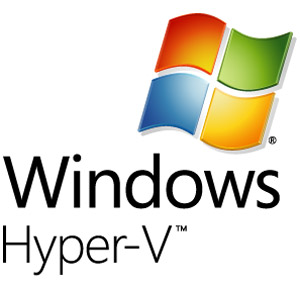 NEWS
NEWS
 NEWS
NEWS
 NEWS
NEWS
![]() Microsoft’s Virtualization platform known as Hyper-V has been a runner-up in the market to VMware’s virtualization platform, the latest version being vSphere 5. The reasons for that could be many, some clients have distaste or distrust for Microsoft solutions in general, some may feel too ingrained with their VMware solution to even try anything else, and some feel there is a technological gap between VMware’s platform and Microsoft’s that would be a detriment to their environment needs.
Microsoft’s Virtualization platform known as Hyper-V has been a runner-up in the market to VMware’s virtualization platform, the latest version being vSphere 5. The reasons for that could be many, some clients have distaste or distrust for Microsoft solutions in general, some may feel too ingrained with their VMware solution to even try anything else, and some feel there is a technological gap between VMware’s platform and Microsoft’s that would be a detriment to their environment needs.
Scott Lowe made a compelling economics-based analysis of leveraging the current platform. Bert Latamore’s review raised the question – Is Microsoft Hyper-V Free? These focused on some very specific and real fiscal advantages. The fact of the matter is in my time as a professional in dealing with these technologies in the interest of the datacenter goals of optimizing server density and efficiency, the current version of Hyper-V 2.0 with Live Migration capabilities has been behind VMware’s lead on a number of enterprise features. With Microsoft Server 2012 coming out later this year, the Hyper-V platform that comes along with it is poised to meet or beat all of VMware’s functionality and features – and do so with little to any additional cost.
A number of VMware’s advanced features that interest the enterprise are pricey third party add-ons and VMware options. Hyper-V 3.0 is bringing a number of things to the table, far too many to list and I’ll share some of the most significant ones.
The features list goes on. The features described are a preview of what is to come and originate from the September 2011 Microsoft Build event when it was known as Windows Server 8.
Some are still stinging from the memory of some significant VMware 5.0 licensing changes.
“Regardless of the reasons or the potential advantages, the reaction to this announcement has not been warm. Customers who scaled up and built systems with large amounts of memory—and there are many such customers—are facing steep price hikes, with many already saying that they’re going to investigate alternatives such as Microsoft’s Hyper-V and Citrix’s XenServer. For Windows-using organizations in particular, Hyper-V is an attractive prospect; it lacks many of the high-end features of vSphere, but with the core virtualization features being free with Windows, its price is hard to beat.”
The Hyper-V 3.0 component of Windows Server 2012 will raise the stakes and VMware will be forced to respond with pricing and features as Hyper-V becomes a more legitimate contender for enterprise customers. There is no doubt that we are about to witness a storm of media, hype, and contention when Microsoft’s product officially hits the market. This is all aligning to be a knockdown back and forth fight, as VMware will attempt to hang on to all the share they can. Be it the public cloud, hybrid, or private cloud, the landscape is about to change and the bottom line is that customers of all types will benefit. If you’re thinking about or re-thinking virtualization, prepare for new options, not only on cost, but training, features, time to implement, and functionality.
THANK YOU